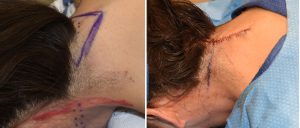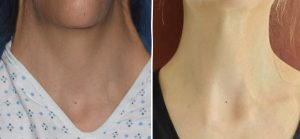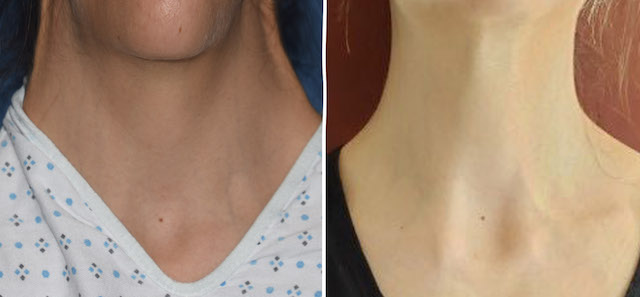Background: The webbed neck is an uncommon congenital neck deformity that is largely an aesthetic concern. Medically known as pterygium colli deformity, they are skin folds that run from the base of the skull behind the ears down to the shoulders. It occurs in a variety of well recognized medical conditions such as Turner, Noonan and Klippel-Feil syndromes. It also does occur in non-syndromic patients as well although whether they represent minor syndromic variants or mosaics can be debated.
The treatment of webbed necks has a long history in plastic surgery and the vast majority of the approaches are laterally-based. The direct approach to the neck webs seems logical , and may well provide the best correction, but the creation of scars on the side of the neck is not aesthetically appealing.
Posterior approaches have also been described, which avoid side of the neck scars, and have relied on soft tissue excision. The ‘butterfly’ excision pattern is the most well known in which the remaining lateral soft tissues were pulled to the midline of the back of the neck and closed. It is reported that the relapse rates with such posterior excisions is significant although that has not been my clinical experience.
Case Study: This 30ish year old female had congenital neck webs although she did not carry any syndromic diagnosis. These were isolated neck webs. She had no restriction of neck movement. Her posterior neck shoed the classic M-shaped hairline pattern with a low hairline down along each web.



The sustained success of a posterior approach to the webbed neck most rely more than just on soft tissue excision alone. Fascial release and midline plication are important intraoperatuve techniques that decrease the risk of any significant relapse.
Case Highlights:
1) The webbed neck deformity can be effectively treated with visible scarring.
2) Posterior neck soft tissue excision combined with trapezius fascial plications reduces or eliminates the lateral neck webs.
3) The most effective webbed neck corrections are in thinner necks with looser skin.
Dr. Barry Eppley
Indianapolis, Indiana





